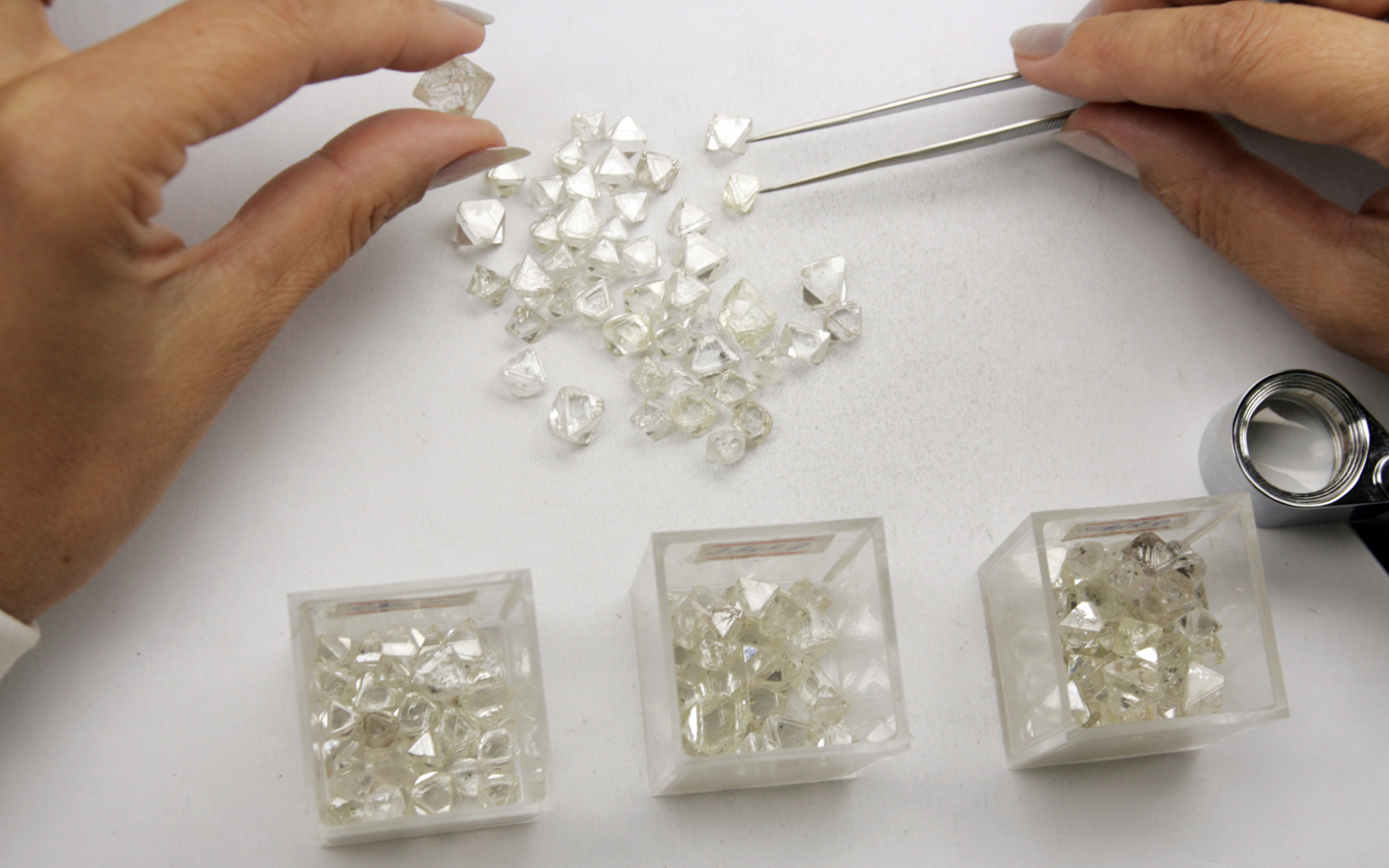Establishing diamond hub in Mumbai may help Russia-India trade

With relaxed taxation and simplified procedures, the direct diamond trade between Russia and India would significantly increase, industry experts believe. Source: press-photo
More than 80 percent of global diamond cutting work takes place in India, and most of the diamonds being cut here are mined in Russia by state-owned Alrosa. However, only 15 percent of rough diamonds that India imports are purchased directly from miners. Most of the diamonds meant for cutting are reaching India through trade hubs in Antwerp, Dubai, Tel Aviv, London, New York and Hong Kong. The existence of middlemen in diamond trade is becoming an additional burden for diamond manufacturers and jewellery makers and, finally, affects consumer prices as well.
If Mumbai become a world-class trading hub with relaxed taxation and simplified procedures, the direct diamond trade between Russia and India would significantly increase, industry experts believe. Establishing a special zone with tax benefits for diamond importers and traders in India's financial capital is being actively pushed by Gems & Jewellery Export Promotion Council's (GJEPC). The new policies were expected to come in the 2014-2015 Union Budget but did not see the light of day. The industry hopes that the new government will take needed steps to boost diamond industry.
“We have sent our proposal to the government and we expect the decision to be taken in few months or probably in February, when the new Union Budget will be announced,’ Sanjay Kothari, member of Diamond Panel Committee, ex-vice chairman of GJEPC, told RIR.
Bharat Diamond Bourse (BDB) launched in 2010 at the Bandra Kurla Complex in Mumbai after 18 years of construction could be a good option for a new diamond trade centre. A huge complex of 9 towers spread over 1.6 million square feet area, the BDB today hosts more than 2500 offices of Indian and global diamond traders, manufacturers, jewellery makers and various services catering to the gem and jewellery trade.
However, when compared to diamond trade hubs as Antwerp, where about 84 percent of the world’s mined diamonds end up or rapidly growing Hong Kong and Dubai, Mumbai is still lacking taxation benefits and simplified custom procedures for the rough and polished diamond trade. While Antwerp which recorded trade worth $55 billion in 2013 and Israel have presumptive tax for the diamond industry, Dubai which became world’s number two diamond trade centre with over $39 billion trading in 2011, has established zero free tax zone. Even China has allowed complete tax exemption in certain provinces.
Apart from global rivals like Antwerp and Dubai, Mumbai has also a local rival in face of Surat, where the most of rough and polished diamonds are being traded. Surat has more relaxed taxations policies.
Rough trade
India’s exports of cut and polished diamonds has been dropping since 2010. During FY 2011-12 and 2012-13 (Apr-Dec) exports witnessed decline of 17 percent and 36 percent respectively. Despite a 12 percent increase in last fiscal, when the industry earned $19.6 million (slightly more than in 2009-10 FY) within the first six months of current fiscal exports declined almost 23 percent, GJEPC data shows. At the same time imports of rough diamonds increased 11 percent to $16.72 million indicating higher activity in the cutting centres despite the sluggish exports.
The task group set up by the Ministry of Commerce under the Chairmanship of the Director General of Foreign Trade Anup K. Pujari in 2013 in order to design policies for setting up a diamond trading hub in Mumbai that will help the whole diamond industry to grow recommended several tax and procedures relaxations.
The group proposed presumptive taxation regime in the long run, allowing for duty free re-import quota for cut and polished diamonds to the tune of 15 percent of the previous three year’s average exports, as well as establishing Special Notified Zones (SNZ) for import and trading of rough diamonds, where net income is fixed and taxes are paid only on invoices raised to Indian companies and some other measures, procedure changes and new policies.
Allowing global miners such as Russia’s Alrosa to sell rough diamonds to India while paying tax at the prevailing rate and having the option of taking back unsold quantities duty-free would reduce rough prices for Indian processing centres and ensure its timely supply.
So far Alrosa has been selling most of its goods through Antwerp and Dubai trade hubs. Alrosa’s 2013 diamond sales totalled 38 million carats of diamonds. Its revenue last year increased 12 percent to $4.67 billion, according to Alrosa financial reports. Its diamond sales to Belgium grew 21 percent to $2.13 billion, diamond sales to Israel and China rose more than 50 percent (up to $472.2 million and $145.4 million respectively). Sales to India stood at $611.2 million although recorded the growth of just 7 percent. GJEPC believes direct supplies of rough diamonds to India could easily reach the level of $4 -5 billion.
In India Alrosa currently has six sightholders. The minder also trades with more than 15 sightholders of Indian origin in different parts of the world. According to Sanjay Kothari, direct contracts with more companies will likely be signed by Alrosa during the International World Diamond Conference organized by the World Diamond Mark Foundation (WDMF) in cooperation with the GJEPC in December in New Delhi.
“We are working with Indian companies both on the basis of competitive bidding and under long-term contracts. The volume of trade with Indian companies, as well as the number of Indian companies we are trading with, is steadily growing in the past 5 years,” Fyodor Andreev, President of Alrosa told RIR. “The trade with India through long term contracts stood at about $700 million in 2013 and within just eight months of the current fiscal it grew more than $ 1 billion.”
Sanjay Kothari admits that trade between Alrosa and Indian companies could be increased significantly if the taxation policy is changed.
Alrosa and GJEPC signed a MoU aimed at improving cooperation between the Russian and Indian diamond communities earlier this year. According to Andreev, Alrosa and GJEPC agreed to exchange information on the development of the cooperation between the Indian and Russian diamond sectors, including overviews of the diamond market and Indian and Russian diamond trade statistics. Both parties will cooperate and exchange information on Kimberley Process issues and jointly work to ensure separate sales of natural and synthetic diamonds.
All rights reserved by Rossiyskaya Gazeta.
Subscribe
to our newsletter!
Get the week's best stories straight to your inbox
